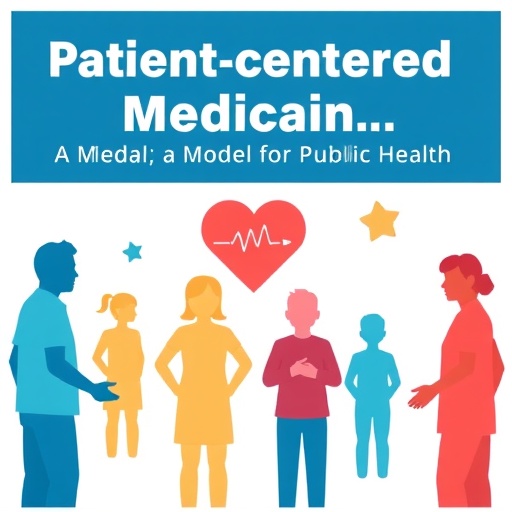In a comprehensive examination of public health insurance capabilities, researchers M. Bann and A. Amick delve into the transformative potential of Medicaid expansion. Published in the Journal of General Internal Medicine, the article titled “Centering the Patient in Public Health Insurance Programs: How Expanded Medicaid Can Serve as an Aspirational Model” poses a pivotal question in the ever-evolving landscape of healthcare accessibility. The study aims to illuminate how bolstering Medicaid programs can not only meet the immediate healthcare needs of patients but also foster a broader paradigm shift towards patient-centered care in public health insurance systems.
The research emphasizes the critical role that expanded Medicaid can play in dismantling the barriers to healthcare access that have historically marginalized low-income populations. By providing essential health services that align with the preferences and needs of patients, expanded Medicaid stands as a beacon of hope for millions. This initiative acts not merely as a safety net but as a scaffolding for a more inclusive healthcare framework, which remains an aspiration in the broader healthcare discourse.
In recent years, healthcare systems across the globe have begun recognizing the importance of patient-centered care—a model emphasizing the patient’s experience, preferences, and values. This pivot from traditional metrics of healthcare delivery towards a holistic consideration of patient needs underscores the significant transformation that the Medicaid expansion represents. The findings presented by Bann and Amick argue for a future where public health insurance programs actively prioritize patient engagement and communication, establishing a partnership rather than a transactional relationship.
Furthermore, the extensive analysis provided in this article unveils the multifaceted benefits of Medicaid expansion. It doesn’t simply enhance healthcare accessibility; it also ameliorates wider social determinants of health. Providing patients with comprehensive health coverage has shown to lead to better health outcomes, reduced hospital admissions, and lower overall healthcare costs. The implications of these findings are staggering, revealing a roadmap for future public health strategies aimed at integrating comprehensive care and improving population health.
Bann and Amick highlight examples from various states that have embraced Medicaid expansion, showcasing significant improvements in coverage rates and health outcomes since implementation. These case studies serve as potent illustrations of how a targeted approach to public health insurance can address disparities and lead to sounder community health. By prioritizing patient perspectives, these states have fostered environments where individuals feel more empowered to seek and receive care, driving overall societal health improvements.
The research also discusses potential pitfalls and challenges within this model. While the shift towards a patient-centered approach is commendable, it necessitates ongoing evaluation and adaptation to ensure that the needs of diverse populations are being met. The authors call for rigorous data collection and analysis to track progress and identify areas for improvement. This continuous feedback loop is essential for refining public health strategies and ensuring that expansions in insurance do not widen existing inequalities.
In addition, the implementation of robust Medicaid programs requires alignment with other facets of the healthcare system, including mental health services, preventive care, and chronic disease management. The interconnectedness of these elements indicates that successful public health insurance programs cannot exist in isolation. Only through a coordinated approach can we truly achieve the ambitious goals set forth in the patient-centered care movement.
Moreover, the conversation surrounding expanded Medicaid is deeply intertwined with broader societal and political debates about healthcare reform. For advocates of universal healthcare, Medicaid expansion represents a vital step towards achieving equitable access for all. However, detractors often raise concerns about funding, effectiveness, and potential overuse of resources. Bann and Amick tackle these criticisms head-on, demonstrating through evidence that the benefits of expanded Medicaid far outweigh the apprehensions regarding its sustainability.
As we project into the future, the journey towards a fully realized patient-centered Medicaid system reveals an urgent need for policy reform and innovation. Lawmakers, healthcare leaders, and community organizations must collaborate to create frameworks that are adaptable to emerging challenges. The evidence assembled in this article serves as a clarion call for action, emphasizing that the time for robust reform is now.
The broader implications of this research extend beyond healthcare accessibility; they touch on the very fabric of society. Health disparities have long-term ramifications not just for individuals but for communities and economies at large. A healthier populace translates to increased productivity, lower healthcare spending, and ultimately, a thriving nation. By placing patients at the center of public health insurance programs, we begin to address these systemic issues and contribute to a more equitable future.
In conclusion, Bann and Amick’s exploration of how expanded Medicaid can serve as an aspirational model for public health innovation provides a necessary framework for ongoing discussion and development in healthcare policy. The road ahead is filled with challenges, but with a commitment to placing patients first, the potential for advancement is boundless. The findings of this research are not just academic; they represent a rallying cry for advocates and policymakers alike to push diligently towards a more inclusive and patient-centered health landscape.
In this pivotal moment of healthcare evolution, the work of Bann and Amick stands as a testament to the power of evidence-based policy. By highlighting the successes and potential of expanded Medicaid, they are illuminating a path forward that champions patient voices and collective well-being. As the healthcare sector grapples with unprecedented challenges, it is crucial that the insights of this study be at the forefront of the conversation, paving the way for a future that truly values and prioritizes patient-centered care.
Subject of Research: Medicaid expansion and patient-centered care in public health insurance programs.
Article Title: Centering the Patient in Public Health Insurance Programs: How Expanded Medicaid Can Serve as an Aspirational Model.
Article References:
Bann, M., Amick, A. Centering the Patient in Public Health Insurance Programs: How Expanded Medicaid Can Serve as an Aspirational Model.
J GEN INTERN MED (2025). https://doi.org/10.1007/s11606-025-09892-x
Image Credits: AI Generated
DOI: https://doi.org/10.1007/s11606-025-09892-x
Keywords: Medicaid expansion, patient-centered care, public health insurance, healthcare accessibility, health outcomes.
Tags: aspirational healthcare modelsbarriers to healthcare accesscomprehensive health serviceshealthcare equity initiativesinclusive healthcare systemslow-income healthcare solutionsMedicaid and public healthMedicaid’s role in accessibilitypatient-centered care frameworkPatient-centered Medicaidpublic health insurance expansiontransformative healthcare models





